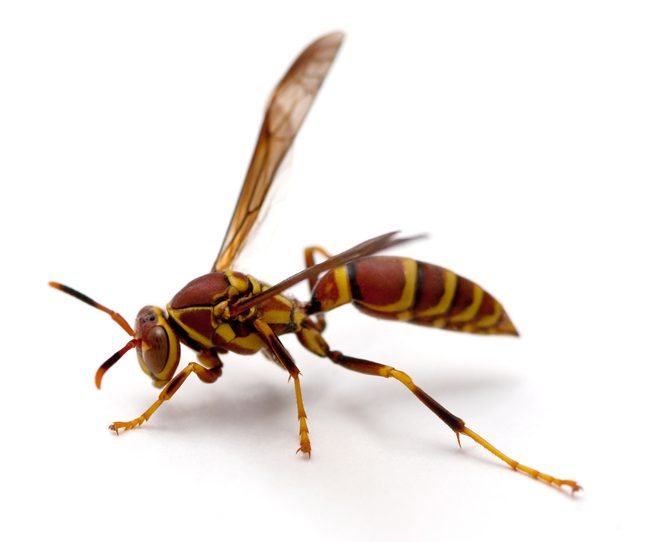
wasp exterminator Services
There are several different species of wasps in Massachusetts. Stay protected with Eastern Pine Pest Controls Wasp Extermination services.
Speak With An ExpertWe’ll safely eliminate The wasps & remove Their nest
wasp exterminator Near Me
We commonly get calls for yellow jacket wasps that have created large nests in homes or inside our wall voids. Our technicians can locate these nesting sites, safely eliminate the wasps & remove the nest.
Wasp pest control in New England is an important issue for homeowners and gardeners alike. The region is home to various species, including the yellow jacket, bald-faced hornet, paper wasp, and European hornet. These insects can cause significant damage to crops and gardens by feeding on flowers and other plant matter and stinging people or pets who get too close. To protect your property from these pests, it’s essential to understand the behavior of each type of wasp that may be present in your area and implement effective strategies for controlling them.
Wasps We Commonly See In Massachusetts
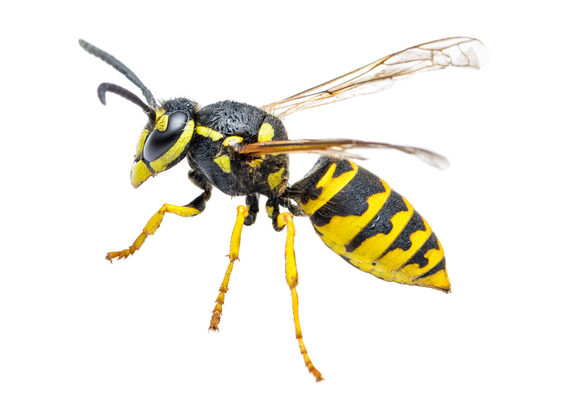
Yellow jackets are a type of social wasp that is often mistaken for bees. They are aggressive and territorial and can sting multiple times. They build their nests in the ground, trees, and buildings.

Paper wasps are another type of social wasp that are generally less aggressive than yellow jackets. They build their nests out of paper-like material, often on the underside of eaves or in other sheltered locations.
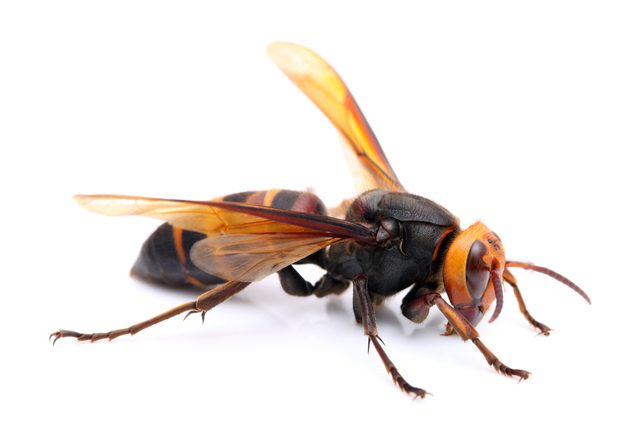
Cicada killers are a type of solitary wasp that are often mistaken for hornets. They are large and brown and feed on cicadas. They build their nests in the ground. While they may be very intimidating, they’re typically non-aggressive.
Size & Appearance:
- Among North America’s largest wasps (females 1.5-2 inches, males 1-1.25 inches)
- Black/dark brown body with yellow abdomen markings
- Amber wings
Behavior & Nesting:
- Active in Massachusetts during late June-July
- Females dig burrows in sunny, well-drained soil
- Solitary wasps that don’t form colonies
- Burrows extend 12-18 inches long and 6-10 inches deep
Diet & Lifecycle:
- Adults feed on flower nectar
- Females hunt cicadas to feed their larvae
- Each nest chamber contains 1-3 paralyzed cicadas
- Larvae develop in 10 days and overwinter underground
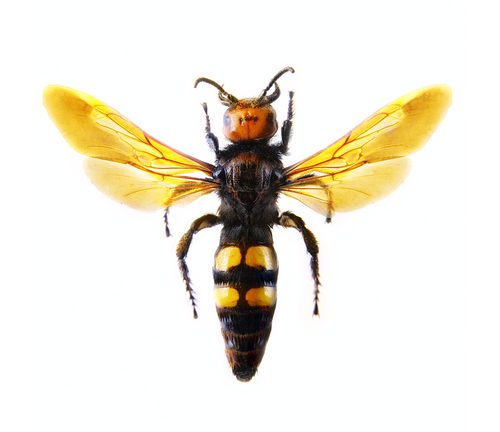
Digger wasps are fascinating creatures that play a vital role in the ecosystem.
Habitats – These remarkable insects are found in various habitats worldwide, including meadows, gardens, forests, and sandy areas.
Appearance – With a diverse range of species, digger wasps exhibit a wide array of appearances, but they generally have a robust body, elongated abdomen, and vibrant colors such as yellow, black, or metallic blue. These wasps are known for their impressive digging abilities, constructing underground burrows where they raise their young.
Diet – As carnivorous insects, digger wasps primarily feed on nectar, pollen, and other insects. They are skilled hunters, capturing their prey and paralyzing them with venom before sealing them in their nests as food for their larvae.
Digger wasps are essential pollinators and contribute to pest control by preying on harmful insects, making them valuable contributors to the balance of nature.
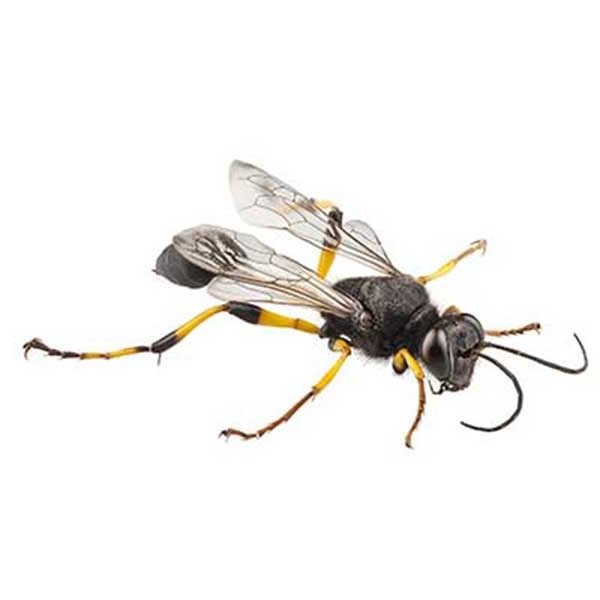
Mud daubers, fascinating members of the wasp family, are known for their unique nesting behavior and distinctive appearance.
Habitat – These solitary wasps can be found in various habitats, including gardens, meadows, forests, and urban areas. Mud daubers are named after their distinctive nests, which they construct using mud and saliva. They carefully shape the mud into cylindrical tubes or structures attached to walls, ceilings, or other surfaces. These nests serve as safe havens for their larvae.
Appearance – In terms of appearance, mud daubers have slender bodies and long, thread-like waists, with colors ranging from black to metallic blue or iridescent green. Their elongated shape and narrow wings give them an elegant appearance in flight.
Diet – When it comes to diet, adult mud daubers feed primarily on nectar and pollen from flowers, while their larvae are carnivorous, feeding on spiders. Mud daubers capture and paralyze spiders, then bring them back to their nests, where they lay eggs on the immobilized prey. This ensures a fresh and ample food source for their developing young.
Mud daubers are beneficial insects, contributing to pest control by reducing the population of spiders in their respective habitats.